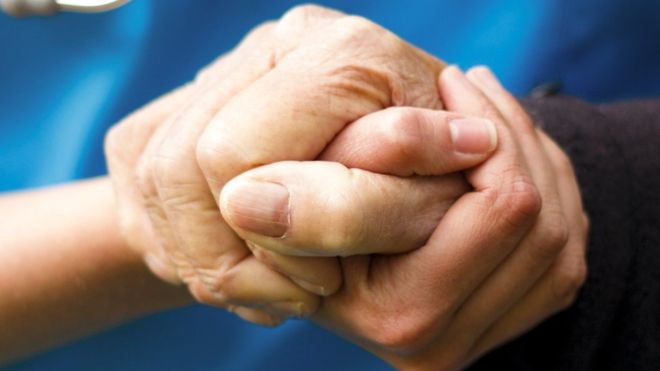Considered to be the model for quality, compassionate care for people facing a life-limiting illness or injury, hospice care involves a team-oriented approach to expert care, pain management, and emotional and spiritual support expressly tailored to the patient’s needs and wishes. Hospice focuses on caring, not curing and in most cases care is provided in the patient’s home.
“At the center of hospice and palliative care is the belief that each of us has the right to die pain-free and with dignity, and that our families will receive the necessary support to allow us to do so,” Aubre Phillips, Director, A Place at Home Omaha.
Aubre understands first-hand what it’s like for a family member to go through hospice. While providing majority of the care for both of her grandparents during their end of life stages – she witnessed just how challenging it can be for the patient and patients family.
“There are families all over the place with a loved one in their last days. It can be incredibly difficult to see someone during this time – many people experience hallucinations, and overall, it’s just a painful process,” Aubre expressed.
Although she realizes the hardships that come with a loved one passing, she doesn’t view death as the end, but rather a new beginning.
“I don’t believe that death is necessarily the end – it’s the passing to the next stage of our life. And I would imagine that that’s really painful and stressful. We need people who can be here helping to support and guide those that are passing on to reassure them that it’s okay and to make sure that they are comfortable when they are on this journey,” Aubre said.
Aubre’s passion for providing end of life care birthed A Place at Home’s Hospice Way – a program dedicated to supporting hospice patients with the compassion and care they deserve.
“A Place at Home has a team of specially trained caregivers that hospice is a passion for them. They understand that the journey is different for everybody, but that their role is to help the person passing on do so in as comfortable and with as much dignity as possible,” Aubre said.
What services are provided?
- Manages the patient’s pain and symptoms;
- Provides needed drugs and medical supplies
- Coaches the family on how to care for the patient;
- Delivers special services like speech and physical therapy when needed;
- Makes short-term inpatient care available when pain or symptoms become too difficult to manage at home, or the caregiver needs respite time; and
- Provides bereavement care and counseling to surviving family and friends.
Beyond Hospice Care
Our devotion to the seniors we care for continues even after they have passed away. In their loving memory and honor, we plant a tree through the Arbor Day Foundation. The newly planted tree memorializes the family’s loved one forever, living on to provide future generations an enduring symbol of lasting peace and comfort.
A Place at Home is rooted in CARE.
Join us in expanding our roots by becoming a franchise partner.



